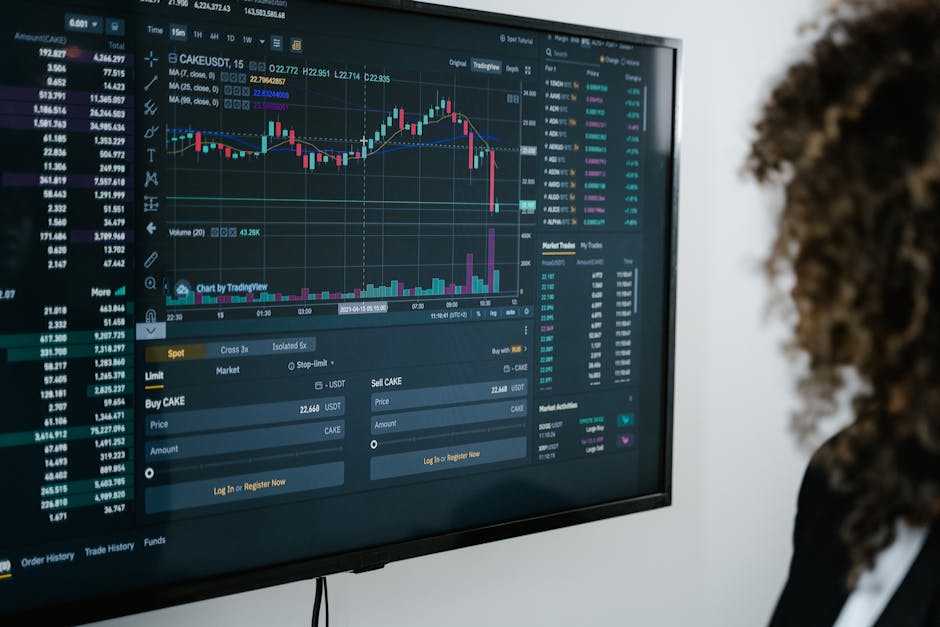Introduction
When it comes to finance, nothing stands still. In fact, the one word that best describes the financial world is dynamic. Much like an ocean, it ebbs and flows, reflecting the wider world’s changes and demanding persistent adaption. At the heart of this fluid field are ‘Investment Strategies’, financial roadmaps that dictate how, where, and when to assign your resources.
Think back to the tumultuous financial events of past years, and it’s clear that formulating effective investment strategies is no walk in the park. Market volatility, geopolitical shifts, changing regulations, societal responsibilities, and yet, the edge of technological advancements have all had a hand in reshaping the way we think about investment today.
Some of us navigated our way through these unchartered territories using refined techniques borrowed from experienced investors, while some of us were unprepared for the engulfing seismic shifts. And yes, let’s admit it – mistakes were made, lessons were learned, but we’re still standing, undeterred, undaunted, and ready to make 2025 our year.
Given the variable nature of finance, adapting is the name of the game. Investment strategies aren’t a one-size-fits-all pair of shoes, snuggly fitting everyone’s needs. Instead, think of them as a tailored suit, meticulously designed to complement both the investor’s preferences and the market’s sometimes unpredictable temperament.
With 2025 just around the corner, crafting a crackerjack investment strategy informed by the year’s unique challenges and opportunities is more crucial than ever. Why? Because our world and the financial markets that mirror it, continuously evolve, and keeping pace means adjusting our approaches accordingly. After all, that’s the savvy investor’s modus operandi: always learning, always adapting, always growing.

Analyzing the Investment Landscape in 2025
As we venture into uncharted territory in the year 2025, getting a distinct picture of the financial milieu becomes a “must-do” task rather than an “optional one.” The investment landscape is anticipated to reflect a potent mixture of opportunities and uncertainties. Among the factors influencing this prognosis are economic recovery trends, the persistence of low-interest rates, and the rise of innovative trends, like decentralized finance. Therefore, optimising investment performance in 2025 will require a careful and fulfilling exploration of the forthcoming financial terrain. Oh, and don’t worry, we’re in this together.
Market research, an often sworn-by tool in the investment world, is expected to be your friendly neighborhood map for navigating this scenery. Deploying formidable allies such as data analysis, financial forecasting, and comparative market analysis, it can help decode the cryptic signs of the financial market into meaningful, actionable insights. That’s so because market trends don’t exactly hit you with a bulls-eye announcement of their arrival, right? Thus, thorough market research allows investors to perceive subtle indications of market shifts and adjust investment strategies accordingly.
So, in 2025, no longer are you simply a passive observer waiting for the market winds to favor your sails. Instead, equipped with comprehensive market research, you take the helm of your investment journey. That means acknowledging the currents, adjusting your course as necessary, and boldly keeping your gaze fixed on your financial horizon. Now, that’s a vista we all would love to sight, wouldn’t we?

Insight into Portfolio Diversification
Diversifying your investments is like ordering a smorgasbord instead of sticking with one dish you know you like. You might find some other stuff you enjoy, and maybe some of those dishes perform even better than your old favorite. In other words, think of diversification as spreading your bets to minimize risk and maximize potential returns.
The economic climate, whether sunny or stormy, doesn’t stay the same forever. And when it fluctuates, all the different investments in your portfolio will likely react differently. Some might slide into negative territory when others are making gains. That’s why you mix things up, having a bit of everything in your portfolio. This way, if one sector takes a hit due to economic variability—one of the only constants in investment—the others might remain intact or, even better, flourish.
A perfect real-life example of a diversified portfolio success story can be seen in the case of American investor Warren Buffett’s Berkshire Hathaway. Despite a rocky start, over the years, the company invested in a broad mix of different companies and sectors. From insurance and utilities to consumer goods and rail transport, Berkshire Hathaway’s diverse portfolio helped it weather economic downturns and delivered impressive returns.
Let me give you another example. Ever heard of the Yale Endowment? It triumphed over the 2008 financial crisis thanks to its diversified investment approach. Instead of frying all its eggs in one basket, say, stocks or bonds, the fund invested in various assets—foreign equities, real estate, natural resources, and private equity. During the market crash, while most portfolios saw a sudden downward spiral, the Endowment’s diversification cushioned the blow and helped stabilize its value.
The takeaway? Keep your investment portfolio versatile, like a well-balanced diet, making sure it contains a mix of different sectors and asset classes to mitigate risks and boost potential benefits. Adapt and evolve your investments, just like the ever-changing economic weather, for better financial health in 2025.

Risk Management in 2025
The Importance of Risk Management
As we forge ahead into 2025, another pivotal aspect of investment strategies to underscore is risk management. The impact of effective risk management in investment planning can never be overstressed – the absence of it might cause your portfolio to crumble like a house of cards.
Risk is an inherent part of any venture, with investing being no exception. On the ever-evolving terrain of the financial landscape in 2025, it becomes crucial to have concrete measures to:
- Manage risk
- Prevent losses
- Stabilize returns
How is Risk Managed in 2025?
So, how exactly do we manage risk in 2025? Although the core methods of measuring risk remain unchanged – diversification (spreading your eggs across different baskets) and asset allocation (proportioning your eggs according to the basket’s size) being the cardinal approaches – the tools we use have significantly advanced. The advent of AI-powered analytical software and predictive algorithms allows us to:
- Calculate risk in real-time
- Predict potential future risks
- Decrease costly mistakes
- Facilitate timely investment decisions
There is, however, no one-size-fits-all method to manage risk. An individual’s risk profile varies based on:
- Investment goals
- Risk tolerance
- Investment horizon
Lessons from Successful Investors
Taking lessons from successful investors who’ve excelled in risk management during turbulent times can be beneficial. Warren Buffett, during the 2008 economic crisis, is a prime example. Despite the market trend, he invested heavily in Goldman Sachs and General Electric – two struggling giants. At the time, this seemed like a risky gamble. However, Buffett’s calculated risks rewarded him well, proving the effectiveness of calculated risk, informed decision-making, and a steady investment strategy.
Conclusion
In conclusion, risk management in 2025 hinges on understanding potential pitfalls alongside leveraging technological and strategic tools to mitigate and manage these risks. The key lies not in avoiding risk but in managing it effectively – a well-calculated risk might be just what you need for a successful investment journey in 2025.

Impact of Technological Advancements on Investment Strategy
In our epoch of exponential technological growth, the investment landscape is undergoing seismic shifts. Let’s peek into how tech is remixing the investment game.
There’s the data assembly line, for starters. Cutting-edge technologies are proving instrumental in gathering, sorting, and interpreting mass data, effectively giving investment players a distinct advantage in the financial arena. For instance, artificial intelligence (AI) and machine learning algorithms churn out patterns and predictions that would be impossible for human analysts to compute within the same timeframe.
Then, there’s the rise of robo-advisors. These automated investment platforms utilize algorithms based on an individual’s risk tolerance and investment goals. They’re essentially set-it-and-forget-it systems that manage, balance and optimize the portfolio, roughly at the cost of a Netflix subscription. It means that investing – once thought the playpen of the uber-wealthy – now becomes accessible to the average Joe. The democratization of wealth, one could call it.
Blockchain technology is another behemoth in the mix, disrupting the way investments are made, secured, and recorded. While best known for supporting cryptocurrencies like Bitcoin, blockchain is gaining traction as a technological foundation for smart contracts and tokenization of assets in the mainstream financial industry. It’s an investment game-changer, promoting transparency, reducing fraud risks, and cutting out unnecessary middlemen.
Technologies are also influencing socially responsible investing (SRI). AI and data analytics have made it easier to track a company’s environmental, social, and governance (ESG) performance, giving investors full-scale insight into a company’s sustainability profile. It’s an enhancement, making SRI not just a feel-good angle, but a proper, data-backed investment strategy.
The eventual takeaway? Technology is not a replacement but a powerful tool to enhance human decision-making. It’s the profound helper for investors to navigate the complex investment waters, make better-informed decisions, and hopefully, reap more substantial benefits. Technology in investing, far from being a fad, is now a necessity — mix it up too late, and chances are, you might be left behind. That’s the way the cookie crumbles in the fast-paced, ever-evolving world of 21st-century investing.

Understanding Sustainable and Socially Responsible Investments
In the strenuous world of investing, the concept of socially responsible investment (SRI), while not new, is attracting the new wave of investors who seek not only financial returns but also a positive societal footprint. These are investors who seek a balance, investing in stocks and bonds of companies who do well by doing good.
SRI speaks to an investment strategy that considers both financial return and social/environmental good. This involves investing in businesses that adhere to environmental sustainability, human rights, and ethical practices. Gone are the days where investments were solely about money makings; in this age, they represent the ethical standing and principles of the investor.
However, for the old school of thought, this raises a question: How does the rise of sustainable investment impact returns?
Data from recent years sends a clear message: SRI doesn’t mean poorer returns. It’s possible to invest responsibly and profitably all the same. Socially responsible funds have not only kept pace with traditional funds, sometimes they have even outperformed them. An ESG index (measuring Environmental, Social, and Governance factors) created by MSCI has outperformed its parent index for the last 8 years in a row, pointing towards the potential for lucrative returns of socially responsible investing.
But don’t just take our word for it, let’s look at the successful examples of socially responsible investments. Patagonia, an outdoor clothing and gear brand, is one of the forerunners that has incorporated sustainable practices into its business with great success. It has doubled its scale of operations while reducing its carbon footprint and is seen as a prime example of business innovation driving profit and progressive change.
In a more traditional investment setting, Parnassus Endeavor Investor Fund – a fund that invests in businesses with exemplary workplace practices and without ties to fossil fuels – has outperformed the S&P 500 over the past decade.
In conclusion, socially responsible investing is an approach that marries your financial goals with your values. As sustainable investment continues to take root, there’s a clear shift in how we perceive investments, their returns, and their impact.

Role of Global Politics and Policies on Investment
Our investment portfolio doesn’t exist in isolation. What happens geopolitically, at an international level, can have far-reaching repercussions on the performance of our investments – a concept we are going to wrangle with in this section.
To begin, let’s consider something a bit larger than us: global geopolitical shifts. These shifts can herald significant impacts on investment returns, often more so than many investors might immediately appreciate. For example, let’s remember the trade war between the United States and China in 2019. Tariffs flew back and forth, creating a less-than-stable environment for import and export businesses. The repercussion? Investors in these sectors were left navigating a severely fluctuating market, reflecting how international power-tussle can ricochet on your investment strategies.
Similarly, international policies can command powerful influence over global investments. Consider Climate Change. The world is shifting gears to eco-friendly alternatives swiftly. Governments across the globe are tightening environmental regulations and doling out tax benefits for corporations curtailing their carbon footprints. For the astute investor, this is a seismic trend to be leveraged – an opportunity to invest in ‘green’ companies who are poised to benefit from these policies.
But remember, the sphere of international policies isn’t limited to environmental regulations alone. We’re also talking about fiscal policies, trade agreements, defense contracts, taxation revisions – a myriad of complex, intertwining factors that can tip the scales of the global economy, and consequently, your investment strategies.
Hence, staying cognizant of global happenings and policies isn’t just recommended for a competent investor. No siree, it’s practically mandatory. This isn’t to say that every political skirmish or new policy should send you running for the hills (or to your broker). However, possessing an understanding of these machinations can equip you with the bigger picture – helping you draft a more bulletproof investment strategy for 2025. After all, the more complete your toolbox, the better prepared you would be to build a successful investment portfolio.

Navigating Through Market Volatility
If you’ve ever driven through a storm, you’d agree that the unpredictability and fickleness of the weather epitomize the character of market volatility. It can be a nerve-wracking experience and requires a composed demeanor and strategic navigation to steer unscathed.
Market volatility, defined as the rate at which the price of an investment increases or decreases for a set of returns, is an inherent part of investing. It’s a double-edged sword, depending on which end of it you’re holding; while it can drastically depreciate asset value, volatility also provides golden opportunities for impressive gains.
So, how does one harness this wild horse? Firstly, it’s important to view volatility through the lens of opportunity. A golden rule? Don’t panic. Knee-jerk reactions to sell amidst a turbulent market often lead to regret when the storm subsides and markets rebound.
Secondly, it’s crucial to arm yourself with tried-and-true strategies. Dollar-cost averaging, for instance, involves consistently investing a fixed dollar amount in a particular investment, regardless of its share price. Over time, you purchase more shares when prices are low and fewer shares when prices are high, potentially lowering the total average cost per share of the investment.
Consider reallocating your portfolio to navigate volatile markets better. Often, adding non-correlated investments or hedge-fund like strategies can help to smooth returns and lower volatility.
Do remember that volatility does not equate to risk – Risk evolves from not knowing what you are doing. Armed with knowledge, savvy investors embrace volatility as it adds to the allure of the investment landscape and fashions opportunities out of thin air.
Navigating through market volatility boils down to maintaining a long-term perspective, being patient, and making informed and rational decisions. The storm doesn’t last forever; with a sturdy investment strategy for 2025, you’re not just surviving the volatility, but thriving amid it. After all, it’s not just about reaching the destination, but appreciating the beauty of the journey. And the road to investment success is often paved with the bricks of volatility. Buckle up!

Taxation and Investment In 2025
As we usher in the year 2025, keeping a finger on the pulse of anticipated changes in financial regulations and tax laws becomes critically important. Not because they’re going to pop up as a trivia question at your next social gathering, but because they directly impact your investment growth. Let’s put it like this: navigating the taxation labyrinth can often feel like learning a new language while wrestling a bear. Funny, right? But in reality, it’s crucial to your financial health, bro.
Consider this, you play the investment game well, and your rewards accumulate.Beautiful, isn’t it? But then comes tax season, and a substantial chunk of that hard-earned growth ends up going to Uncle Sam. That’s not quite the win you had imagined. If tax considerations seem like the annoying friend who crashes your success party, it’s time to turn that relationship around. Embrace the tax beast. Learn its quirks. Use it to fuel your investment performance, rather than impeding it.
So, how do you develop a tax-savvy investment mindset for 2025? Well, get used to ‘strategic planning’. Yeah, it might sound like boring jargon, but it’s about smartly maneuvering your investments in a way that maximizes post-tax returns. We’re talking capital gain taxes, income taxes, and corporate taxes. Familiarize yourself with possible relief in these areas, and you are donning the hat of a smart investor who knows how to keep the tax monster on a leash.
You see, tax-efficient investing isn’t simply about minimizing the amount you pay in taxes. It’s about understanding how to leverage tax laws to ensure you’re keeping as much of your returns as possible. In short, in 2025, a smart investor is a tax-savvy investor. And that, my friend, is the essence of this game.

Conclusion
As we conclude our discussion on investment strategies, it’s clear that the journey into 2025 is both exciting and challenging. The investment landscape is set to undergo substantial shifts spurred by numerous factors.
Navigating the Investment Landscape
As the landscape transforms, creating an effective investment strategy will demand dynamic approaches and close vigilance. Key points to consider include:
- Embrace Diversification: Use diversification as a protective shield against market volatility. Don’t put all your financial eggs into one basket; spread the risk.
- Prioritize Risk Management: Robust risk management will be deeply valuable, especially in the face of unpredictable economic swings.
- Leverage Technology: Stay open to harnessing the power of technology. Use its intelligence to guide your investment decisions.
- Sustainable & Responsible Investing: Understand that returns and social responsibility are not mutually exclusive. Champion both to make a profit while considering ethical and environmental factors.
- Global Politics & Policies: Navigation will greatly depend on how we align ourselves with global politics, anticipated changes in finance regulations, and tax laws.
Essential Tools for Success
Your navigation tools in this evolving environment should include consistent learning, in-depth research, and staying abreast of the latest trends. Adaptability, awareness, and agility will be crucial elements in preparing for the future of investments.
Looking Ahead
As you approach the threshold of 2025, arm yourself with a resilient investment strategy. Remember, equipped with the right information and smart strategies, you’re perfectly suited to maximize your investment returns and succeed amidst the economic currents.
It’s indeed a vast world, but with sufficient foresight and vigilance, you’ll be poised for success. Here’s to an enterprising 2025!
